How to Find a Building Plot – The Complete Guide to Finding Land for a Self Build
Looking for a plot of land to build your new home on? Tracking down the right plot for your project is a little more complex than purchasing an existing house. The good news is 13,000 people successfully build their own home each year – but if you want the best possible chance of identifying a viable site, it’s worth getting to grips with the process first.
With so many different sites available across the UK, it all comes down to how much work you’re willing to put into a project, alongside your budget, time restrictions and plenty more. From knock-down and rebuild projects to conversion opportunities or serviced plots, each will present their own challenges and benefits.
To help you find the perfect plot for your project and begin your search in confidence, here we’ve gathered all the essential information and details you need to know.
First Steps to Finding a Building Plot
A common mistake made when plot hunting is searching over too wide an area. So, choose an area where you want to live. If you don’t focus your search to a specific and manageable geographic location, don’t be surprised if the sheer scale of the task overwhelms you. It’s better by far to pick the area you want to be in and then blitz it.
Of course, you’ll need to understand whether you can afford property values in your target area. Signing up to dedicated land finding websites, such as Plotbrowser.com by Build It, is a good idea.
With PlotBrowser.com, you’ll gain access to thousands of carefully-researched plot listings, all with planning permission. This not only saves you time and effort finding exciting opportuniities, but will also help you understand plot values in your area.
You can then compare plot prices with the likely cost of of building your new home and make an informed decision about whether a particular site or area will fit your budget.
While some self builders find a plot quickly, for others the process takes years. That’s especially true if if you’re particular about elements such as size and the amount of work you’re willing to take on. So, be prepared to revise your goals if your search isn’t going well. Flexibility, combined with the ability to focus your time and energy on the hunt, will give you the best chance of success.
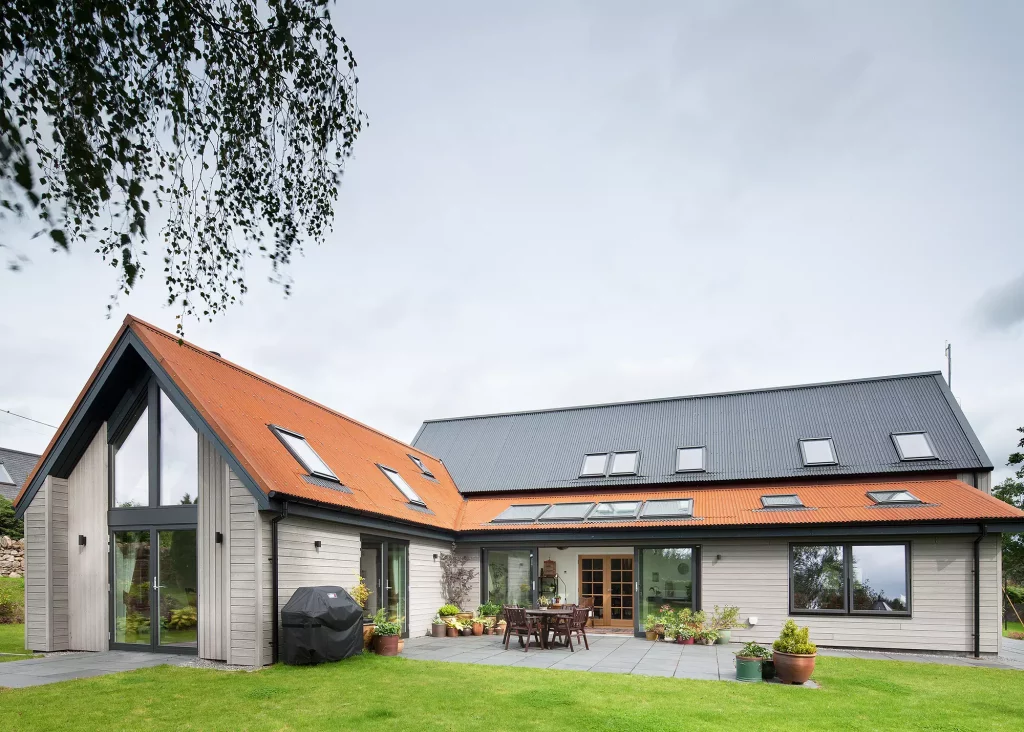
Jim and Barbara Hewson created a modern timber frame home in a section of their steading’s garden, where they had lived for 35 years. The house, designed by Fiddes Architects, features a Siberian larch exterior and a unique Corten roof. The materials ensure the house blends well with the local hamlet
How Can I Go About Finding a Building Plot?
Few self builders simply stumble on a great plot by chance and end up building on it. Identifying the right opportunity can take considerable time and effort, so it pays to adopt a multi-pronged approach. So what are the best land hunting routes?
Narrow your search The first thing to think about is where you want to build, and that should be more granular than just a county-level. If you’re going to be able to do your research properly and get into the best position to take a plot forward, try to identify particular towns, villages and suburbs you’d happily live in.
With this kind of focus, you’ll be able to make time to gain a deeper understanding of what’s going on in that local market and what could work for you. What kind of projects are being granted permission, for instance, and would something similar meet your goals? Does the council seem pro-development? Where is the settlement boundary? What kind of prices are plots going for?
Top 9 Ways to Find a Building Plot
1. Use your contacts
Don’t underestimate the power of networking. Tell your friends and co-workers that you are looking for a plot. They may have heard of someone selling in your preferred area, for instance, or even have a large garden they’d be willing to split at the right price. Social media can be a big benefit here, spreading the word even quicker. Advice from local experts such as architects, planning consultants and package home providers could also prove invaluable.
2. Explore the area
Walk around the locale to identify empty land between houses, garden plots or disused garages – all of which could offer potential build opportunities. If you spot a site that you think could have scope to be developed, then approach the owner and let them know you are interested. If the owner isn’t obvious and you can’t find out via the Land Registry, try speaking to the neighbour.
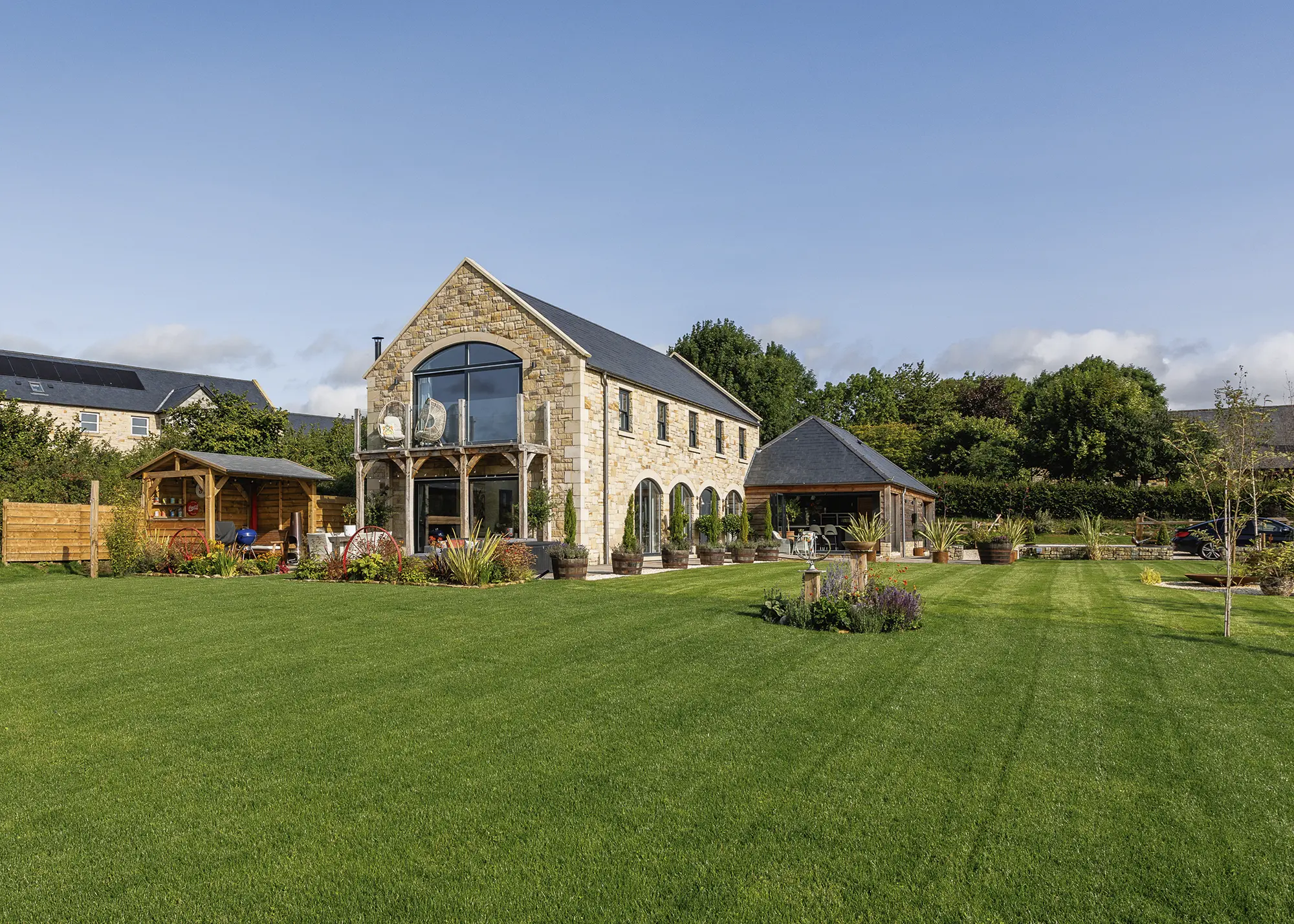
Rod and Trudy Molyneux’s 0.4-acre plot in Northumberland came with permission to build a 213m² home. The couple designed their Potton timber frame within this footprint, building an additional 24m² garage. Photo: Potton
3. Talk to locals
Head to pubs and shops in the area you’re considering to meet residents, as they may be able to tell you about opportunities not yet listed. Professionals such as architects, building surveyors or planning consultants in the region may be a useful source of leads, too – and you might want to use their services further down the line.
4. Speak to business owners
Local farmers, breweries, universities and other organisations may have surplus land they want to sell (or would consider selling). Many do so via estate agents, but there’s no harm approaching them directly.
5. Sign up for your Right to Build
Councils are now obliged to maintain official self build registers, thanks to the government’s Right to Build legislation. You can record your interest in obtaining a plot and state the type of project you are keen to pursue.
If 200 people sign up, the council is then supposed to permission 200 viable sites within a three-year period. You aren’t guaranteed land, but the legislation should see the availability of build-ready plots improve dramatically.
FIND OUT MORE about right to build
6. Visit the council’s website
Local authorities list current planning applications online, usually under the ‘planning’ or ‘housing’ sections – with details of the scheme, who has applied and when. If you find a likely-looking opportunity and can get in touch with the owner before they get consent, you’ll be in a strong position to secure a purchase.
7. Use plot finding databases
Build It’s PlotBrowser.com lists thousands of sites with planning consent across the UK. Happily, it’s also free to use. As well as giving you the chance to find a good site, PlotBrowser helps you get a feel for land prices and availability in different areas. You can also see which estate agents are active in your region.
8. Check out property auctions
Many good quality plots change hands this way. Auction houses such as Clive Emson, Allsop and Savills sell a variety of sites, so get on their mailing lists for catalogues. Remember that you will need to have finance in place – once the hammer goes down, the contract is triggered and a deposit is due.
9. Register with agents
Many building plots are still sold through traditional estate and land agents. Monitor the books of both types, as some may have overlooked the planning potential of properties they’re selling (eg for a demolish and rebuild opportunity). The personal approach can pay dividends with this route, too – if they know you, they’re much more likely to give you a heads up when something’s coming onto the market.
What Makes a Good Building Plot?
Picture the perfect piece of land and it will probably be in a pleasant area, affordable, completely level, easy to access and have good ground conditions, no obstructions and no planning issues that might hamper your dream home plans.
Trouble is, that plot doesn’t exist (or at least if it did, a big developer probably snapped it up ages ago). In practice, even the best site will require you to make a few compromises. So it’s crucial to assess contenders properly to check you can get as close as possible to your goals at a cost that stacks up.
Plots generally come with planning permission in place: either outline (which is a fairly loose affirmation that the site can be developed); or full (consent for a particular design). Beware any site that doesn’t have a current approval. Land is worth considerably more once consent has been granted, so if the deal looks too good to be true, it probably is.
Assessing a Plot’s Basic Potential
Once you’ve spotted a likely-looking opportunity, there are two key questions to ask before delving in further. Can the house you want to build be comfortably accommodated on the plot (eg in terms of size, local property values and the like)? And does the existing planning consent allow for that house, or could it be amended to suit? If you can say yes to both of those, then it’s worth a bit more research.
In terms of site suitability, you need to check for issues that could increase construction costs (which should be factored into any offer for the land), make it difficult to get the right kind of design for your household, or affect the viability of a project.

This plot of land was a serendipitous find for Kevin O’Mahony and Claire Edwards. It was the only plot left in a development of twenty or so on a Greenfield site but made the perfect opportunity for them to create the bespoke home they’d dreamt of
Some of the most notorious self build budget-busters include steep slopes, difficult access to services (electricity, gas, water etc) or obstacles such as trees, existing structures and overhead cables. But these issues may not be insurmountable, and with good design some can even be turned to your advantage. A sloping plot is likely to offer great views and the potential for a basement, for instance, and you won’t face much competition from developers.
From a planning perspective, check how long is left on the consent. If it’s less than about six months and you need to redesign the house or sort out any conditions the planners have put on the permission (such as approval for materials), this could be problematic. It might sound obvious, but you should also scrutinise the plot boundaries to ensure you’re buying all of the land included in the approved plans.
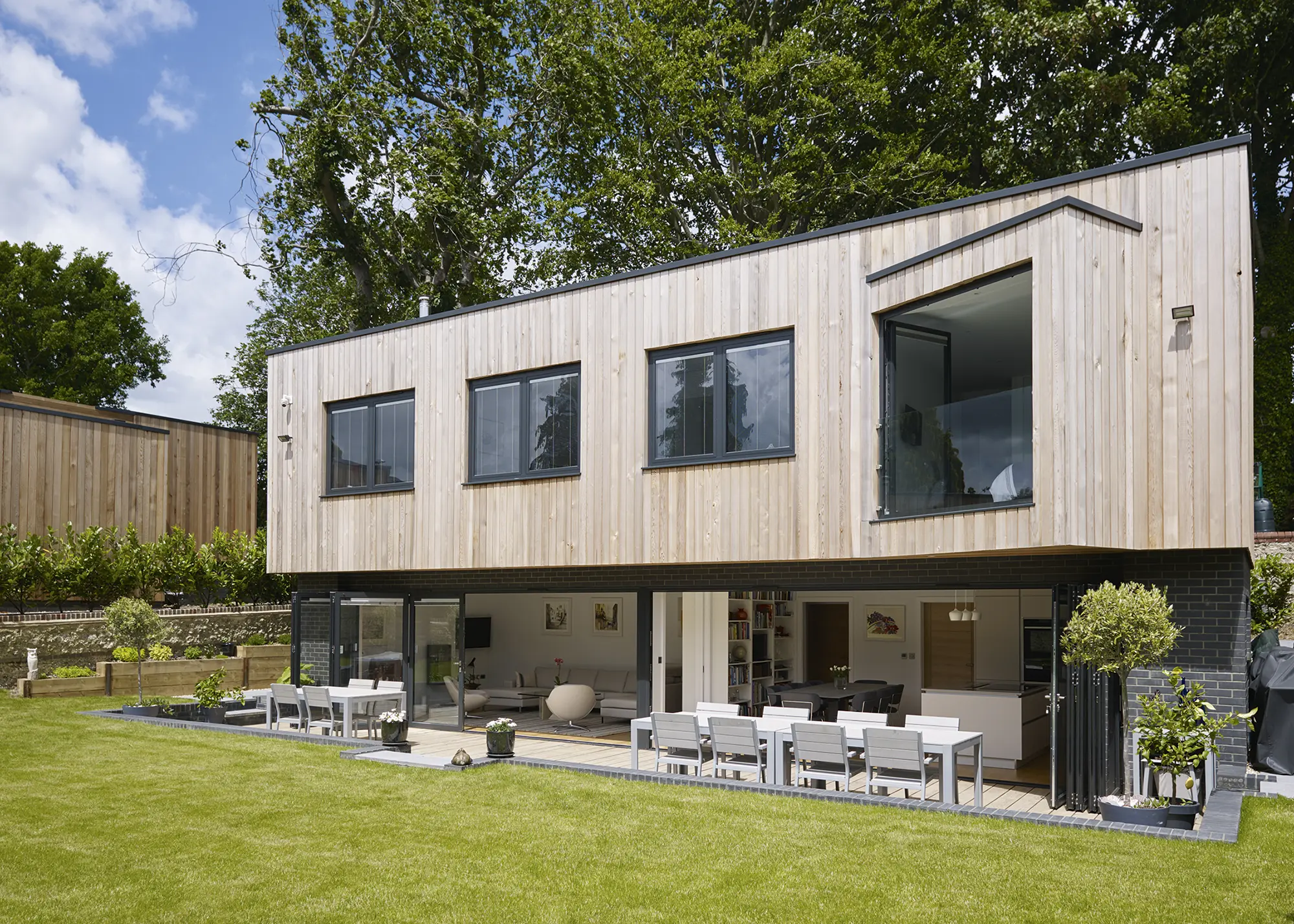
In search of the ideal home to enjoy in their retirement, John and Judith Turner built a modern, energy efficient home on a friend’s walled garden West Sussex. Photo: Alistair Nicholls
Conducting a Detailed Assessment of the Plot
If early-stage investigations seem positive, you can move on to a more in-depth appraisal of exactly how suitable the site is in terms of planning potential and build costs. This will take in things like access, trees, ground conditions, drainage and legal considerations.
If you come up against anything you’re not sure about, seek advice from suitable professionals. That might mean speaking to your local council about planning matters or engaging a solicitor on the legals. A planning consultant, architect or specialist design-and-build company may also be able to point you in the right direction or help you undertake a full viability assessment.
What Types of Building Plot Are Available?
Bespoke homes can be constructed on a range of sites, and knowing about the opportunities can help you spot land with potential for your project. Here are some of the key options:
Brownfield sites
This is basically previously-developed land that is or once was occupied by a permanent structure. Government policy supports the provision of new housing in such locations, so councils tend to look favourably on plans that have the potential to improve these plots. Plus on a practical level, services are likely to be in place already.
Demolish & replace
A type of brownfield opportunity where you could knock down an existing building, such as an old bungalow or former non-residential structure, and construct a new (usually bigger and more attractive) home in its place. It’s often more cost-effective than tackling a renovation, as VAT can be reclaimed on a new build project. This is also known as a replacement dwelling.
Infill plots
There’s no formal definition of this type of site, but many councils take it to mean a small gap between an otherwise built-up frontage or group of houses. Infilling is usually allowed within settlements’ development boundaries – and sometimes outside of these. Gaining consent will be more difficult in zones such as conservation areas.
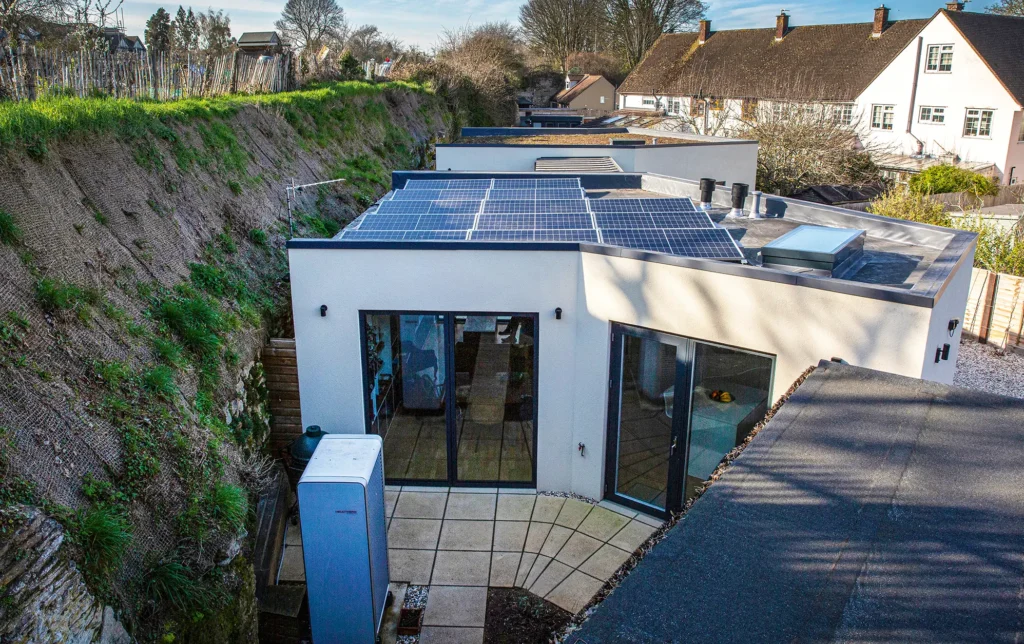
Nestled behind a row of 1960s terraced houses, David and Jenny Bird’s new single-storey home is built on the site of a disused quarry, just inches from the quarry wall. The flat roofs are planted with sedum on one side and topped by single-ply membrane with solar PV panels on the other
Gardens
Contrary to ‘backland development’ and ‘garden-grabbing’ headlines, planners still pass garden schemes – especially in places considered to be built-up. You may even be lucky enough to have a large space that could work as a viable site already; or know a friend willing to provide one.
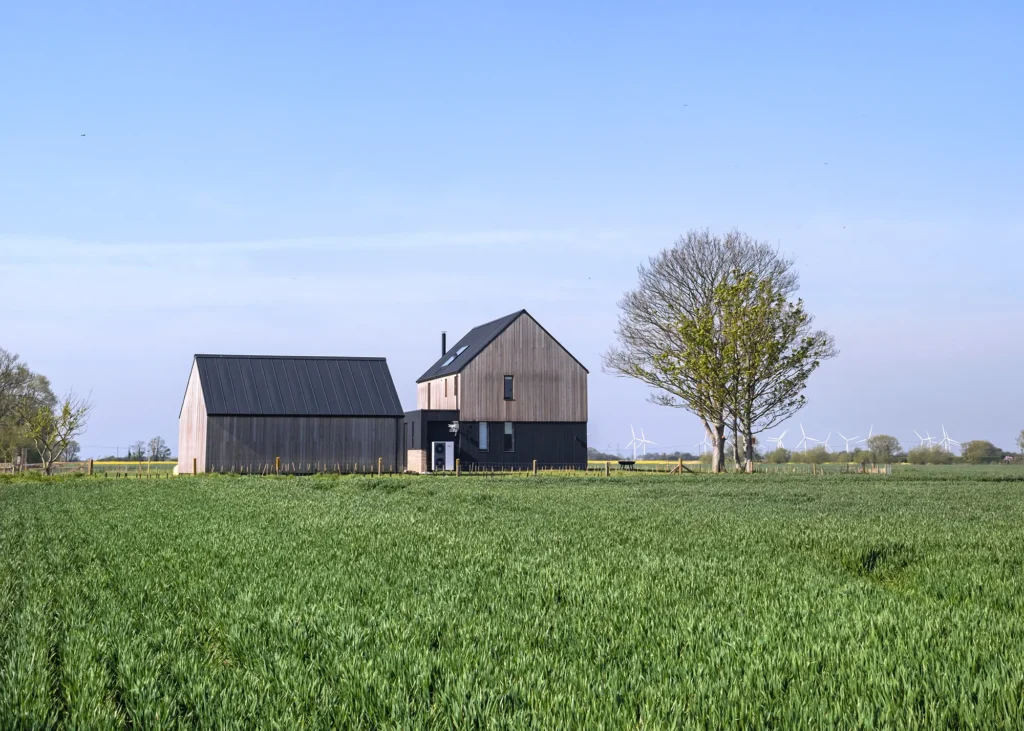
While living in a tiny cabin on the family farm, Freddie and Katie Pack saved up to build a stunning contemporary and efficient house on a farmland plot a few fields away. The barn-style home is clad in a mix of timber cladding, blending well with the local vernacular
Edge-of-settlement
Depending on the maps marked out in Local Plans, this kind of site might fall within built-up area boundaries or it might not. Generally, policies will allow development within this zone – but control it very strictly outside. This undeveloped land is known as greenfield, and will typically only offer housing to serve the needs of agriculture, replacement dwellings and some infill.
Serviced plots
A fairly new option, this is land that’s ready to build on – with utilities, highway access etc already in place, as well as at least outline planning consent. This route offers the benefit of more certainty over early-stage costs.
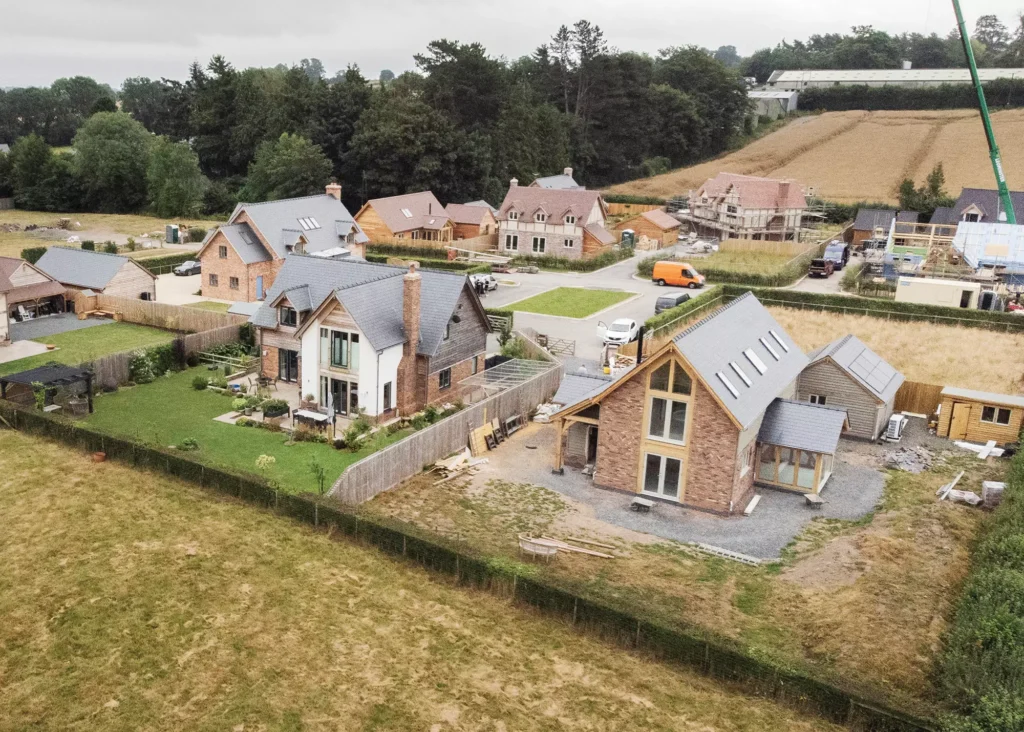
Winner of Best Custom Build Project or Model in the 2022 Build It Awards, Webbs Meadow is a serviced plot development offering 13 individual sites (all sold and either complete or in construction). A partnership between the landowner Kinsey Hern and Oakwrights, all the houses were individually designed for the homeowners, who had a choice of building routes
In recent years, thousands of sites suitable for one-off homes have become available across the UK via what’s known as custom build. Serviced plots are emerging as the leading custom build route. This takes a lot of the time and risk out of the process for self builders, as you know you’re dealing with a viable site.
FAQ What is custom build & is it right for you?Custom build is a route to creating your own bespoke home, but with some of the work already taken care of. Where self build projects involve sourcing a plot, applying for the relevant permissions to develop it and arranging services and access, the custom building process usually involves multi-plot sites bought and prepared by an enabling company or developer. They key benefit is the enabler secures planning, installs key infrastructure and utilities, and, in some cases, prepares the site with foundations or your bespoke home’s structural shell. Drawing a clear line between custom and self build can be difficult. Typically, a custom build scheme will follow either a serviced plot approach (utilities, access and planning in place, with foundations to suit your final design included in the sale) or a customisable home model (where you tailor a pre-designed house). When it comes to self build, one of the biggest challenges is finding a plot that will be straightforward to develop. In comparison, custom build sites aim to remove this hurdle by providing a development-ready plot – but you may find there are differing levels of design control available over the finished property. |
What are the Main Barriers to Finding a Plot?
Plots are relatively scarce in the UK, due partly to an abundance of protected areas compared to other European countries. Currently 90 percent of land in England can’t be built on, though the National Custom & Self Build Association’s efforts to secure the Right to Build is helping to ensure the release of more sites for self-builders.
Planning policies restrict most schemes to development boundaries around existing settlements. The government is trying to relax this under its Localism Bill, but building new houses (as opposed to replacement or conversion) in greenfield areas is still difficult. New plots, then, tend to be within these development boundaries. But in high-demand areas the obvious sites have been picked clean by developers.
The plots that remain are often brownfield sites – meaning it’s land that has been previously developed – and it’s here that the most opportunities will lie.
Complete Guide to the Right to Build
PLOT BUYER’S CHECKLISTThink you might have identified a viable site for your self build project? Our quick-fire plot buyer’s checklist will help you decide: Am I ready to act quickly? It’s important to have your funds and/or borrowing lined up and legal representation ready to go so that your offer looks enticing to the vendor (if you’re buying at auction, this is essential). Is planning permission in place? The outline or full consent shouldn’t be about to expire, as this could put your dream home project in jeopardy. Any conditions attached to the permission must be acceptable to you. Are there any fees? Double check whether you will be liable for a Section 106 charge or any other financial contributions to the council as a condition of the planning permission. These could increase your project costs markedly, and may need to be accounted for in your offer. Am I getting all the land? Ensure the plot area that’s for sale is exactly the same as that indicated on the current planning permission – otherwise you could run into trouble with ransom strips and other issues. Can I change the consent? The majority of self builders will want to tweak the design to some degree, so think about whether you want to revise the existing planning permission and if these amendments are realistic. Are there any other obstacles? Check whether the plot has a right of access to the public highway and ascertain if any legal issues, such as restrictive covenants, might bring extra costs or prevent you building. |
How Much Does a Building Plot Cost?
Your plot will be the biggest single purchase you make for your project. In the past, the final value of a self build house could be roughly split into thirds – one third plot cost, one third build cost and the final third profit.
But in areas where plots are rare and prices higher, land may account for more like 50% of the total value of the completed house. Although you will be looking for the perfect plot to go with your perfect house, you need to be realistic about what you can obtain within your budget.
The perfect plot, if such a thing even exists, is going to be both elusive and expensive. So, for the vast majority of people some form of compromise must be called for.
The trick is to see past what’s there and spot the potential in the site. What looks like a tangled mess of brambles and rubbish at first glance can become a very nice plot after a few hours of work with a JCB. If you can realistically change what you don’t like then do so, but if the compromise needed is too much to bear, then move on to the next plot.
CLOSER LOOK Build It’s Self Build Education HouseBuild It magazine’s Self Build Education House is a real-life, access-all-areas project located in Graven Hill, a development of serviced plots in Bicester. A visit to the house will give you a unique and unrivalled insight into the process of creating your own bespoke home. The Build It Self Build Education House in Graven Hill was designed by Lapd architects. They were tasked with delivering ‘wow’ factor on a budget, and so selected an ICF (insulated concrete formwork) construction system, with striking fixtures and fittings that bring a light and airy feel to the property. You can take a virtual tour and read about our journey towards creating Build It’s Self Build Education House by clicking here |
Should I Buy a Plot of Land With Planning Permission in Place?
Land is available with one of two types of planning consent in place – outline planning permission (OPP) or detailed planning permission (DPP). The former is consent in principal for development to occur, leaving some or all of the particulars to be established in a later application for DPP (you must apply for this within three years of OPP being given).
But don’t dismiss a plot just because the permitted design doesn’t suit you. Even if DPP is already in place, you can submit a new application for a different design without revoking the existing permission – so you don’t necessarily have to stick to a plan that doesn’t suit you.

Cairnrowan Custom Homes won the 2023 Build It Award for the Best Custom Build Model for Meldrum House Estate Development located in Aberdeenshire. Custom build plots have planning permission and services already in place
Because of their scarcity, building plots are notoriously expensive and the cost differential between land with and without planning can be huge. You should never buy land that’s being marketed without planning permission. So, resist the temptation to buy a cheap plot of land on the basis that ‘it will get planning one day’.
What you can do is make an offer subject to achieving satisfactory planning permission (and any other required consents) for a design you’re happy with. But if you sense that you won’t get them, walk away. Ask yourself the simple question as to why outline planning has not already been obtained if it’s a feasible plot.






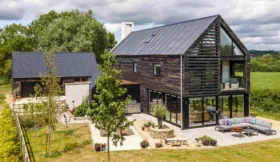














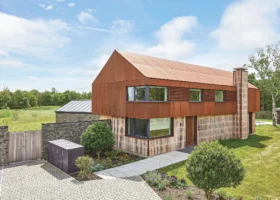





























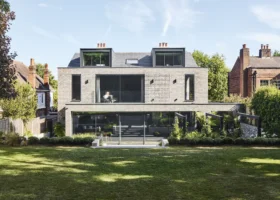








































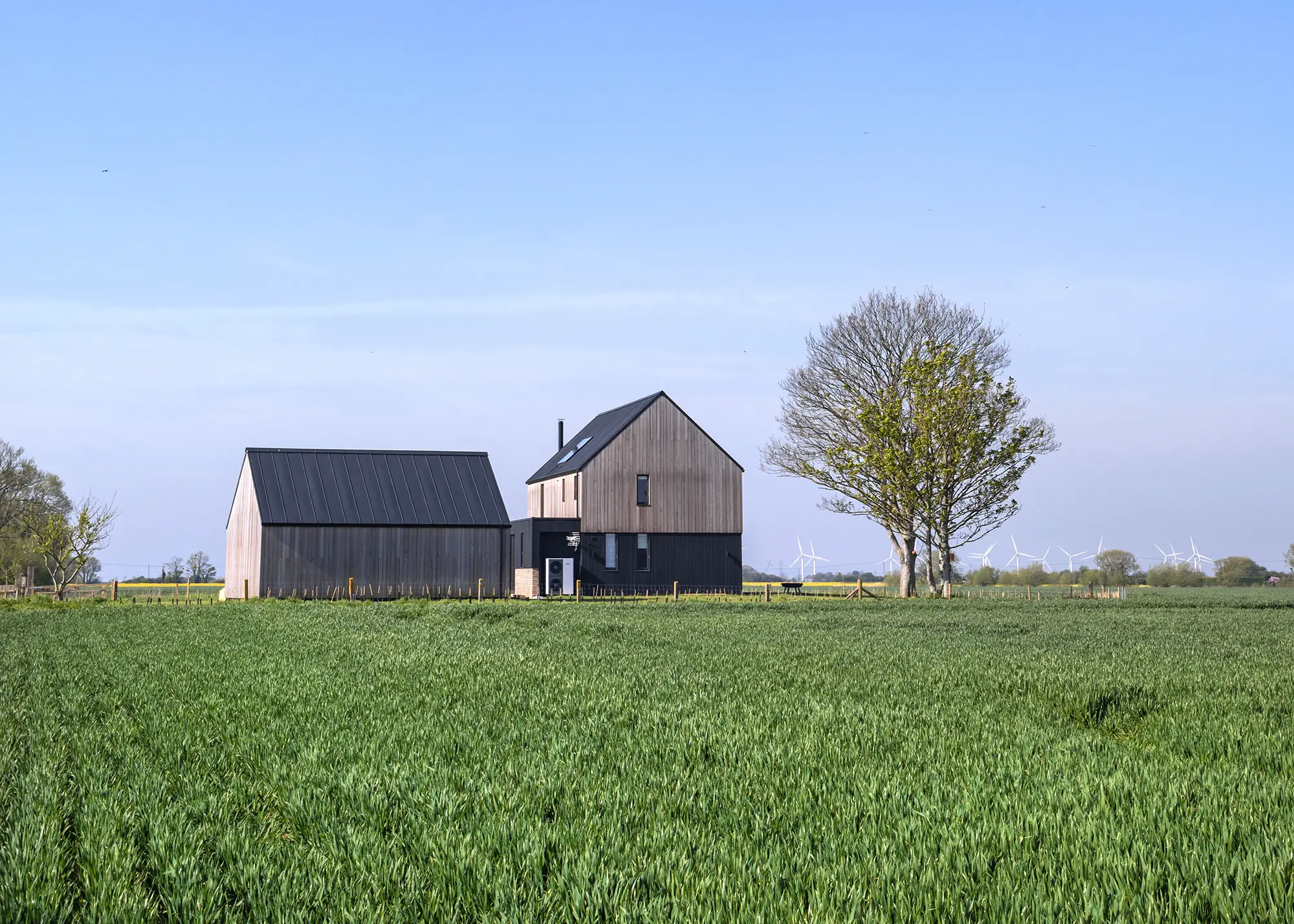
 Login/register to save Article for later
Login/register to save Article for later

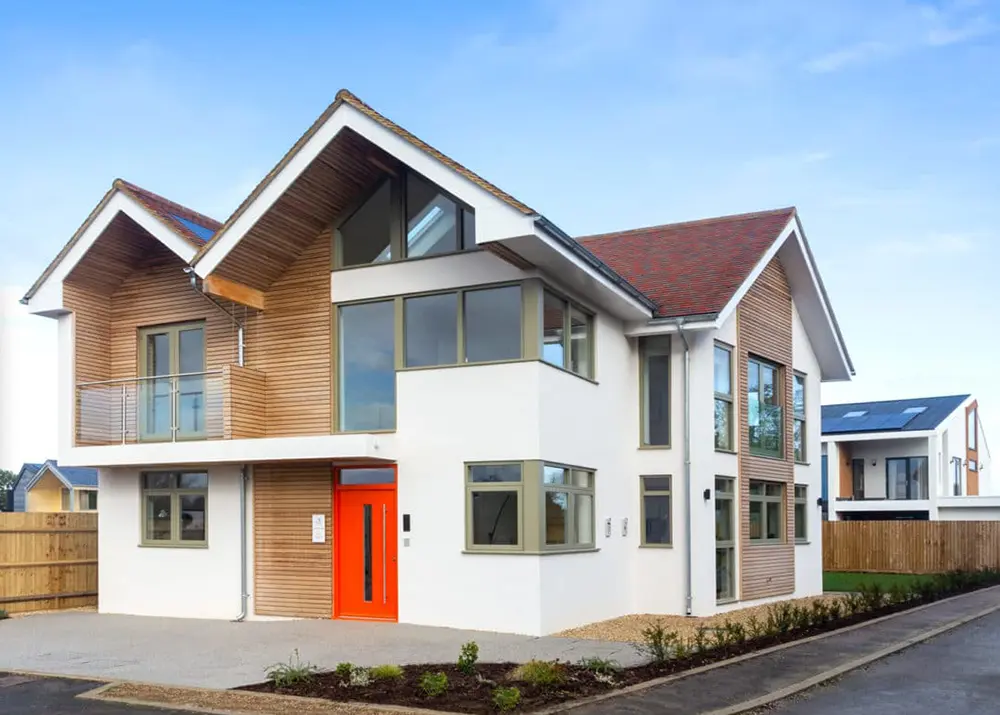
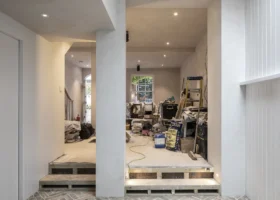
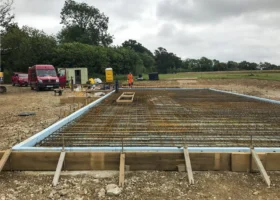
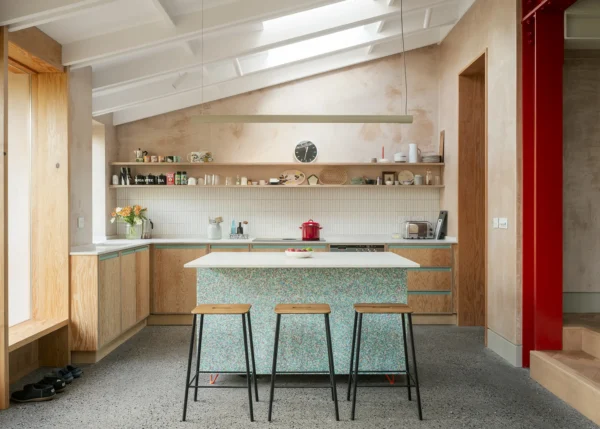
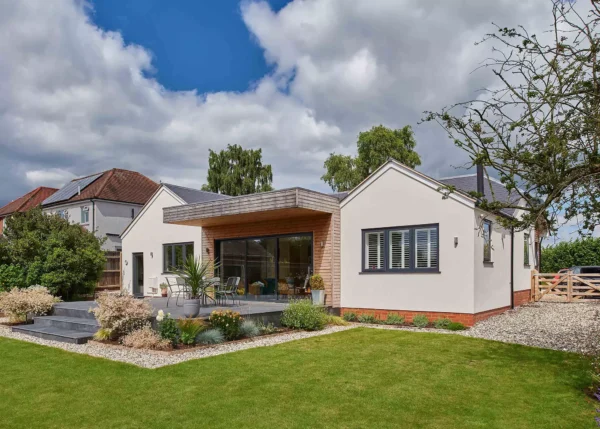


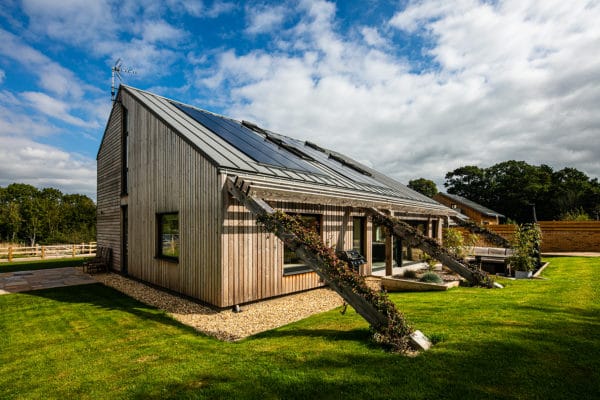
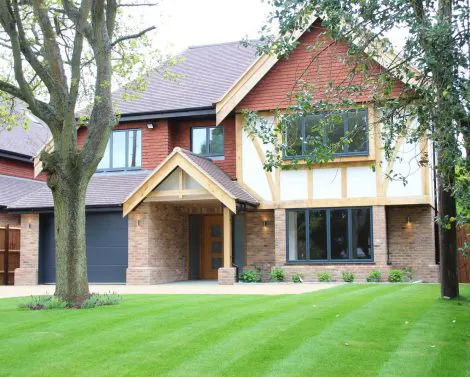






The advice is to never buy a plot without planning permission, but also to knock on doors/write to people as “you just might find someone who hadn’t realised they were sitting on a potential source of revenue.”
Surely in that case it would be a plot without permission? How do you find out if a plot is likely to be granted permission?
Hi Lauren,
I’ve made a couple of tweaks to the article to hopefully clarify this for you… but basically the principle is that a plot that’s being marketed without planning permission should immediately ring some alarm bells.
Given that the value of a plot rockets up when it has planning consent, it’s extremely unlikely that someone would try to sell that plot without the benefit of some kind of planning in place.
So, if you see a cheap-looking plot for sale without planning, chances are all you’d be buying is a place to store your deck chair. It’s extremely rare that a suspiciously cheap plot actually has true development potential (in some cases the vendor may have already tried to gain planning and failed).
On the other hand, some people might have big gardens or other types of empty/disused land, and may not realise that they’re sitting on a potential plot. So they’re not actively trying to sell it, and it’s you who is identifying the potential.
There are similar risks in that you don’t know for sure that you can get planning until you apply… and that’s why you might consider making an offer that’s conditional on you achieving consent for a design you want.
Hope this helps!
Chris (Editor, Build It)